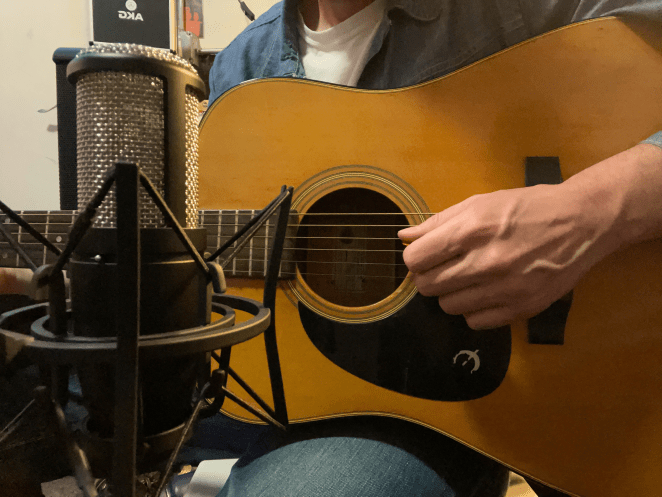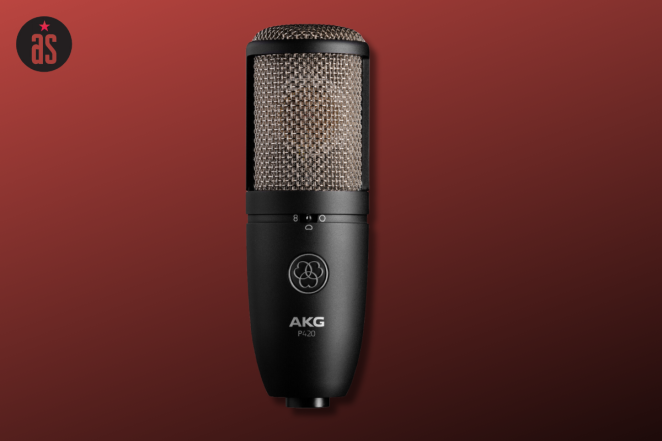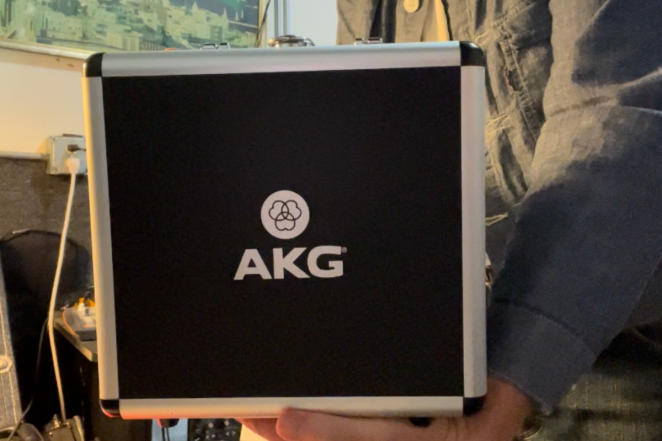
If you’re an aspiring recording artist or engineer, there are a few things you’re going to need off the bat. Your instrument is a good start. A solid interface is a must-have.
And finally, you’re going to need a quality condenser mic. Designed for clear reproduction of audio sources with clarity and sensitivity, condenser mics are the standard choice for recording acoustic instruments and vocals – a pretty likely starting point for any recording career.
AKG’s P220 and P420 are perfect options for home recording enthusiasts and experienced engineers alike. Their clear, faithful, yet warm and responsive reproduction is perfect for vocals, acoustic instruments, and more – and they come at a price point that is attainable for just about anyone.
One cool thing about these mics is that you get the same incredible sound quality with each one. I found the only discernible difference to be that the more premium option, the P420, has a few more bells and whistles that lend it a versatility that might not be necessary for some users. Which should honestly make it pretty easy to choose the right one for you!
I’ll go into more detail below about each mic’s features and specs so you can make an informed choice when purchasing your secret weapon for the studio and stage.
Why trust me?

As a singer/songwriter and multi-instrumentalist with over 20 years of experience under my belt, I have a piece of advice that I give to just about anyone starting out recording (that I wish someone had given me): do yourself a favor and get a good quality condenser mic. There’s no better way to come to terms with hearing the sound of your own voice than by capturing it at its best!
I had the privilege of testing out a beautiful pair of AKG P220 and P420 for this review, and I can’t wait to share my experiences with you.
My process was simple: for each microphone, I performed a simple acoustic rhythm guitar track, an acoustic lead guitar track, and a fairly dynamic vocal track. I performed the same song at the same tempo so I could compare the audio quality truly side-by-side.
AKG P220 & P420 Condenser Mics: Overview & Specs
Let’s start out with an overview of each microphone, along with some technical specs and other need-to-know details.
AKG P220

SPECS
Polar Pattern: Cardioid
Audio frequency bandwidth: 20 - 20000 Hz
Equivalent noise level: 16 dB-A
Sensitivity: 20 mV/Pa
Signal to Noise: 78 dB-A
Preattenuation Pad: -20 dB
Bass cut filter: 300 Hz - 12 dB/octave
Electrical impedance: <= 200 Ohms
Recommended load impedance: >= 1000 Ohms
Length: 165 mm
Diameter: 54 mm
Net Weight: 530 g
AKG describes the P220 as a “large-diaphragm true condenser microphone offering a warm and clear sound for lead vocals, acoustic guitar and brass instruments,” and that (minus the brass part) is just what I found it to be.
The clean, matte-finished chassis has just a couple onboard controls: a switchable bass-cut filter and a -20 dB attenuation switch for louder sources.
The first thing I noticed when unboxing the P220 was its considerable heft. That’s not to say it’s unwieldy – on the contrary, it’s quite compact and includes a handy and durable carrying case – rather, it’s got a solid feel that lends it a sense of quality.
The included shock mount was easy to set up, and I was quickly off to the races. I found the bass-cut filter instantly useful when recording acoustic guitar in my practice studio – it’s not only helpful for eliminating unwanted rumbles from beyond studio walls, it also reduced the boominess of my dreadnought acoustic to an acceptable level.

My acoustic rhythm and lead tracks came through with perfect clarity and really left nothing to be desired – I was very pleased with the sound I got with absolutely zero tweaking on my DAW. It was clear, bright, and natural – all the things an acoustic guitar tone should be.
Recording vocals is a pretty vulnerable process, even for the more experienced among us. But with the P220, I had nothing to worry about. As soon as my voice hit the headphones, I was confident that my vocal was going to sound great.
The mic responded equally well to whisper-soft passages as it did to brassy belting. The sensitivity needed to capture more delicate vocals was there, as was the bass response necessary to keep my belting tenor voice from sounding thin.
AKG P420

SPECS
Polar Pattern: Cardioid, Omnidirectional, and Figure of eight
Audio frequency bandwidth: 20 - 20000 Hz
Equivalent noise level: 15 dB-A
Sensitivity: 28 mV/Pa
Signal to Noise: 79 dB-A
Preattenuation Pad: -20 dB
Bass cut filter: 300 Hz - 12 dB/octave
Electrical impedance: <= 200 Ohms
Recommended load impedance: >= 1000 Ohms
Length: 165 mm
Diameter: 54 mm
Net Weight: 530 g
My experience with the P420 was in many ways similar to that with the P220 – albeit with one major difference.
The P420 features three switchable polar patterns (cardioid, omnidirectional, and figure-8), which allows a whole world of versatility beyond what you get with the P220. With these changeable patterns, you can explore entirely different recording situations than you can with the P220, which is a selling point for some (pro engineers, for example) but could be overkill for others (solo musicians/producers).
A brief (and very general) primer for those of you who are unfamiliar with different polar patterns:
Cardioid: Cardioid polar pattern is “heart-shaped,” meaning really that it picks up a spread of sound from directly in front of the microphone. Good for miking a solo voice or instrument.
Omnidirectional: An omnidirectional pattern picks up sound equally in 360 degrees around the microphone. This pattern is ideal for room miking a live band or vocal group.
Figure-8: A figure-8 pattern picks up sound from opposing sides of the microphone, like directly in front and directly behind. This makes it especially handy for recording duets (or interviews).
The interchangeable polar patterns combined with the -20dB pad feature make for an extremely versatile mic that’s useful in just about any recording scenario. You could set this thing up in the middle of the room and record a full band no problem, even accommodating louder instruments like drums and electric guitars, which is in fact just what I did.
It performed wonderfully on omnidirectional and figure-8 modes, capturing louder sounds from across the room with clarity and precision – after a bit of fiddling with my levels, of course.
Conversely, you still get the same intimate detail on vocals and acoustic instruments as the P220 by using the cardioid pattern. My results (performing the exact same parts as I did while testing the P220) were pretty much indistinguishable from those recordings – nuanced reproduction of breathier passages and formidable response to full-voiced belting, plus great acoustic guitar sounds, be they gentle plucking or hard strumming.
Final Thoughts

Whether you’re a home recording enthusiast or a seasoned pro engineer, the AKG name is one you can trust. For quality-built, dependable microphones that consistently deliver clear and accurate sound, no matter what price range you’re shopping in, you just can’t go wrong with AKG.
This is absolutely true of the P220 and P420 condenser mics I tested. These rock-solid mics performed incredibly well in a variety of settings, and when you take into account their price, well, it’s practically a no-brainer.
If you’re a budding recording artist or engineer, you would do very well to make one of these your first condenser mic. And even if you’re an experienced recording engineer, you can’t go wrong adding a P220 or P420 to your arsenal.

